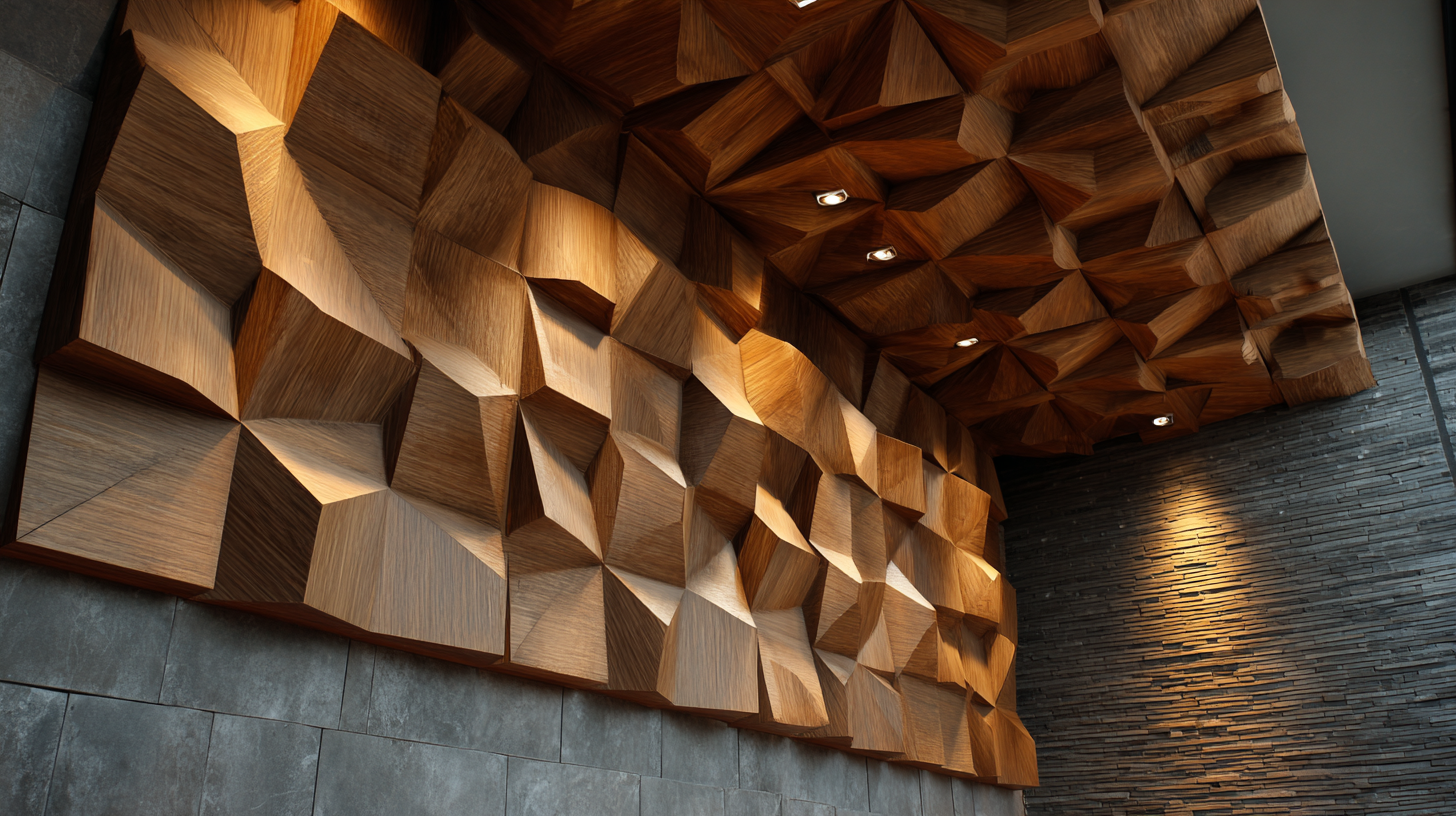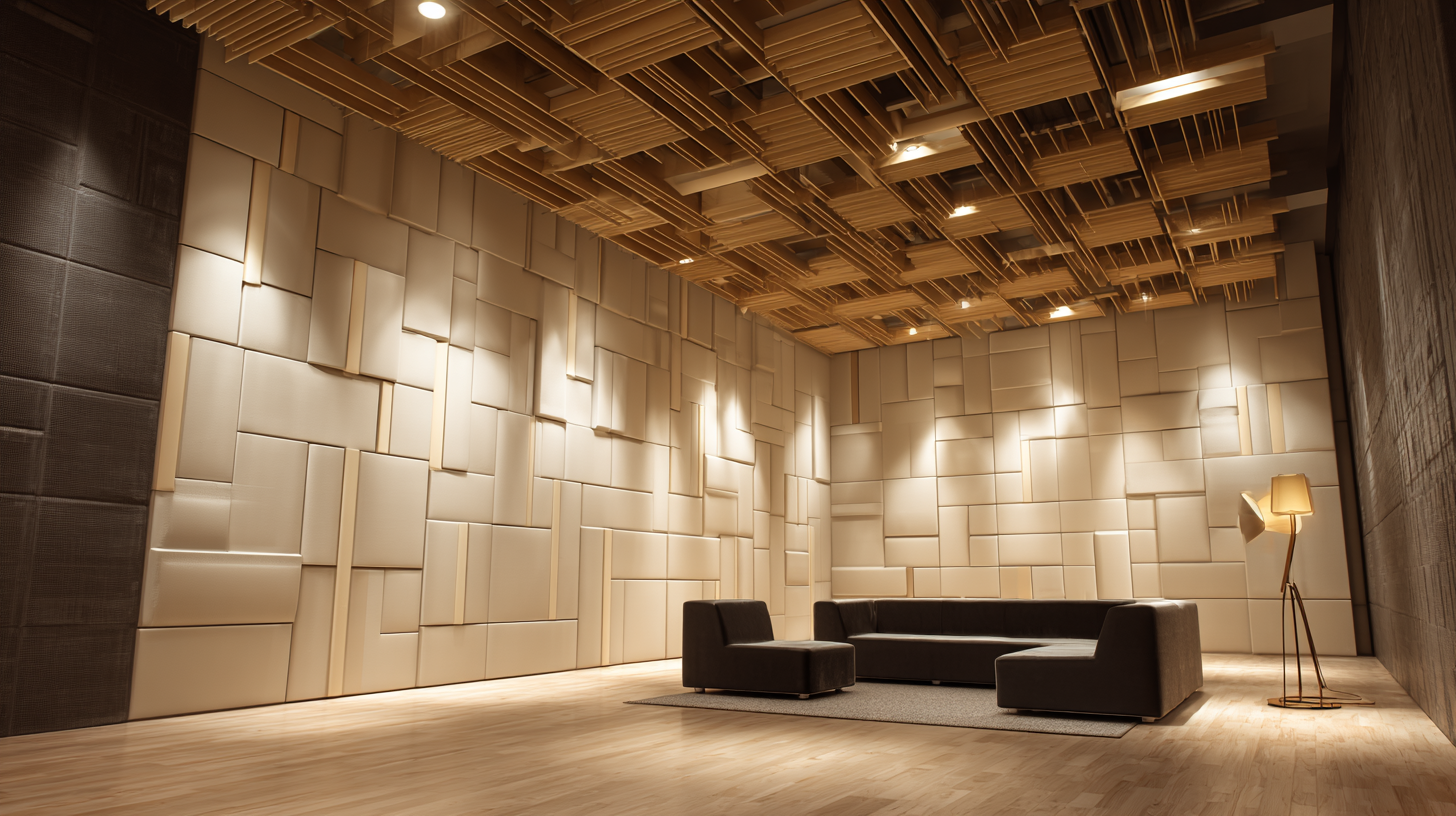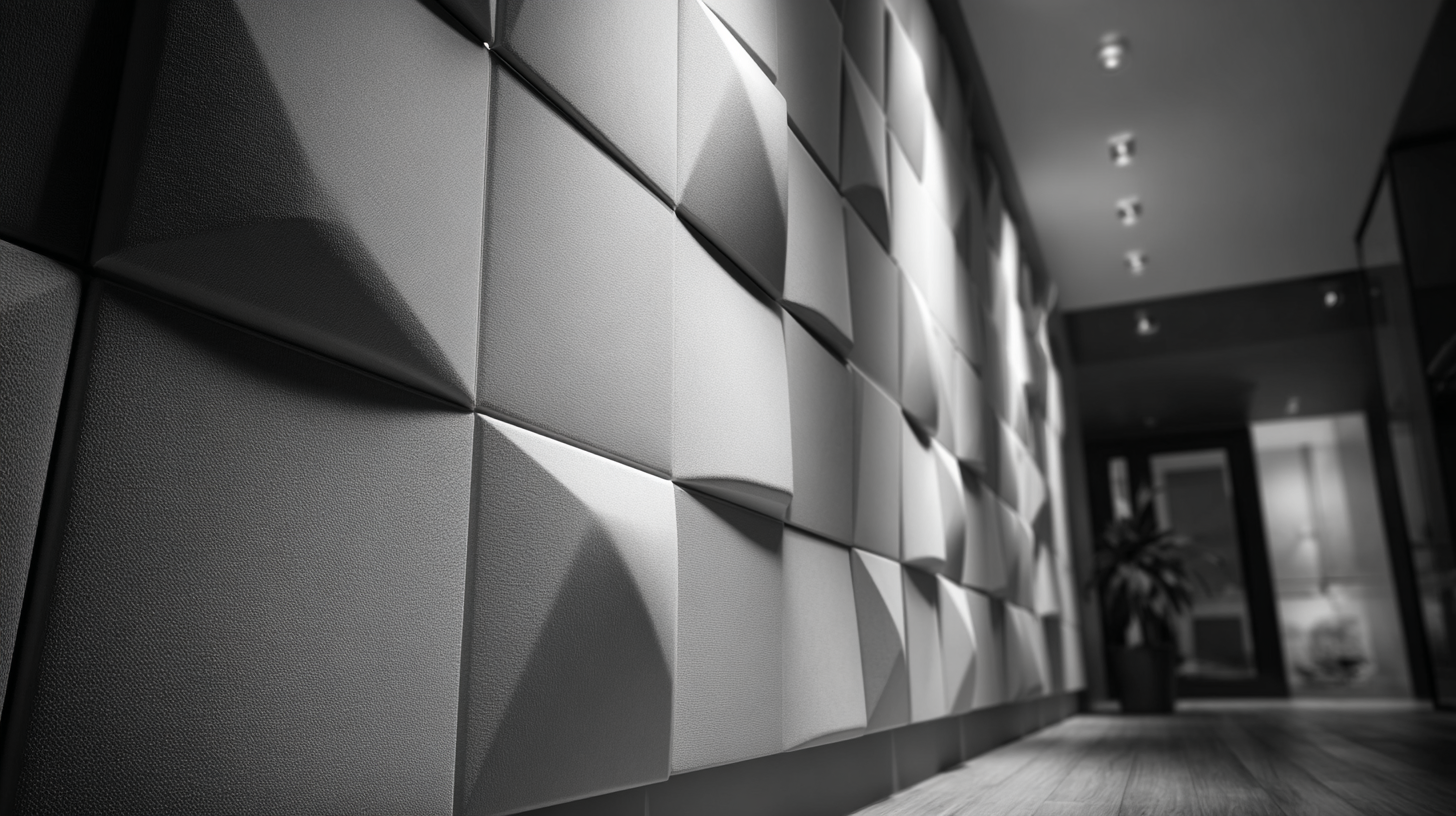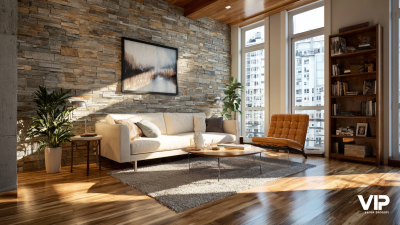When it comes to enhancing the sound quality in any space, choosing the right Acoustic Panel is a crucial step that can significantly impact your environment. Whether you’re outfitting a home studio, a conference room, or a cozy living area, understanding the various options available is essential to achieving optimal acoustics. Acoustic Panels come in various sizes, shapes, and materials, each designed to address specific sound-related issues, such as echo, reverberation, and noise control. This guide will explore the key factors to consider when selecting the perfect Acoustic Panel for your needs, including acoustic properties, aesthetic appeal, and placement strategies. With the right information, you can transform your space into an acoustically balanced environment that not only sounds great but also looks stylish.

When selecting an acoustic panel, understanding the different types available can guide you in tailoring the solution to your specific environment.
The major categories include foam panels, fabric-wrapped panels, and wood panels.
Foam panels are lightweight and ideal for home studios or practice rooms, where they can absorb sound waves effectively without adding significant weight to the walls. Their versatility in colors and patterns allows for aesthetic customizations, making them suitable for personal spaces.
In contrast, fabric-wrapped panels elevate the design while maintaining sound absorption capabilities.
These panels are often used in professional environments such as offices or conference rooms, where both functionality and decor play essential roles. They come in various fabric options, allowing for a seamless blend with existing interior designs.
For more formal or high-end settings, wood panels can offer an elegant finish while also reducing echoes and improving sound clarity. These panels are perfect for auditoriums or performance spaces that require both acoustical treatment and a visual appeal. Each type serves unique needs, ensuring optimal sound management in diverse settings.
When selecting acoustic panel materials for your space, several key factors should be taken into account to optimize sound absorption and aesthetic appeal. The material's Density and Thickness are critical; denser materials like mineral wool or fiberglass typically offer better sound absorption, particularly at lower frequencies. According to the Sound Abatement Society, panels with a minimum thickness of 2 inches can significantly reduce reverberation time, making them ideal for spaces like recording studios and auditoriums.
Another essential consideration is the NRC (Noise Reduction Coefficient) rating of the material. A higher NRC rating indicates better sound absorption quality. For instance, materials with an NRC value of 0.80 or higher are recommended for environments that require effective noise control. Additionally, understanding the panel's finish and color can enhance the overall design of your space while maintaining acoustical functionality.
**Tips**: When choosing acoustic panels, always consider the specific acoustical challenges of your area. Test samples in your environment to assess their performance. Furthermore, combining different types of panels can create a more balanced acoustic treatment and a visually appealing design. Analyze your space and choose a variety of materials that work together to achieve the desired sound and aesthetic outcome.
When considering acoustic solutions, it's essential to distinguish between sound absorption and soundproofing, as each serves a distinct purpose in enhancing the auditory environment. Sound absorption refers to the process of reducing reverberation and echoes within a space, employing materials that trap sound waves and convert them into minimal heat energy. According to a study published by the Acoustical Society of America, effective acoustic panels can reduce sound reflections by up to 50%, significantly improving speech intelligibility and overall sound quality in settings such as recording studios, offices, and restaurants.
On the other hand, soundproofing aims to block sound from entering or leaving a particular space. This is often achieved through denser materials and construction methods designed to create a barrier against sound transmission. Industry reports from the National Institute of Building Sciences indicate that soundproofing materials can lower sound transmission by 30-40 decibels, making them crucial for environments where privacy and noise control are paramount, such as in multi-family residences or commercial spaces near heavy traffic. Understanding these differences allows individuals to select the appropriate acoustic treatment for their specific needs, ultimately leading to enhanced comfort and clarity in sound-related environments.

When choosing acoustic panels, aligning their design with your interior aesthetics is crucial for creating a harmonious environment. According to a report by the National Institute of Building Sciences, up to 30% of our indoor environment’s comfort can be attributed to sound management. This statistic highlights the importance of selecting acoustic treatments that not only improve sound quality but also complement the overall design of the space.
Acoustic panels are available in various materials, colors, and textures, allowing for seamless integration into any interior scheme. For instance, fabric-wrapped panels can be customized to match the color palette of your room, while wooden panels can add warmth and texture, catering to more rustic designs. The Journal of the Acoustical Society of America emphasizes that the effectiveness of acoustic treatments can also enhance aesthetic appeal, suggesting that a well-designed space contributes significantly to occupant satisfaction and productivity. Therefore, it’s essential to consider both functionality and visual impact when selecting the right acoustic panels for your space.

When evaluating the efficiency of acoustic panels for your space, it's essential to consider various metrics and their impacts on reducing noise pollution. According to a recent market analysis, the global acoustic panel market was valued at approximately USD 13.1 billion in 2024 and is projected to reach USD 24.2 billion by 2034, experiencing a compound annual growth rate (CAGR) of 7.2%. This growth is largely driven by increasing urbanization and the resulting noise pollution, which has significant health implications for residents.
The demand for effective acoustic solutions is underscored by the development of innovative technologies, such as newly designed noise barriers using composite mixes of acoustic panels. The need for such advancements is further emphasized by the increasing attention toward indoor environments, where acoustic properties are crucial for enhancing overall comfort and productivity. As cities evolve, so does the importance of selecting the right acoustic panels, not only for aesthetic purposes but also for their ability to mitigate sound and create healthier living and working spaces.






